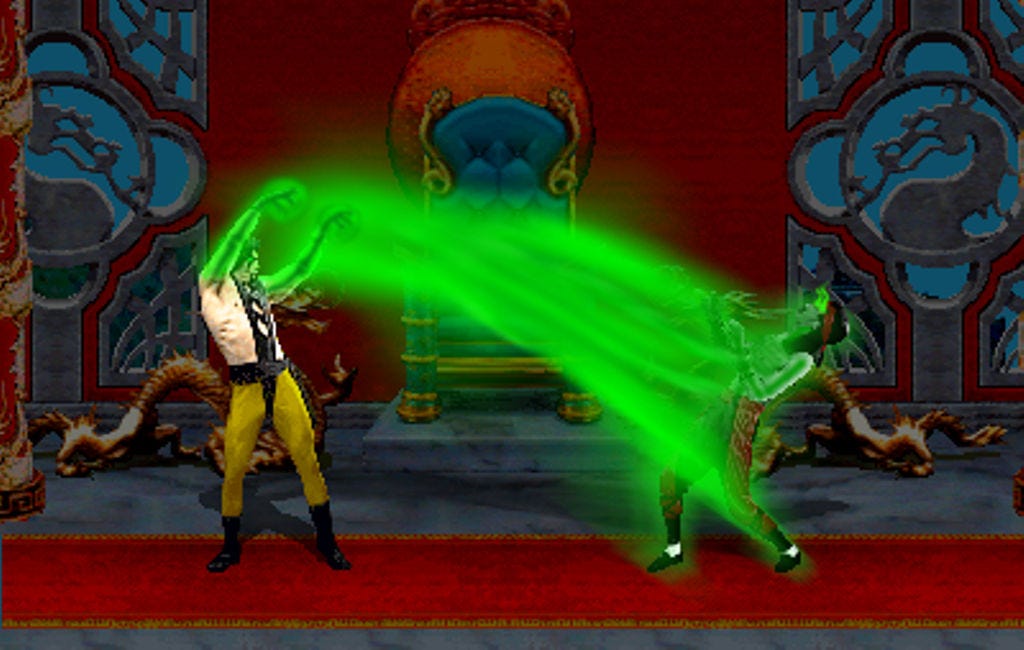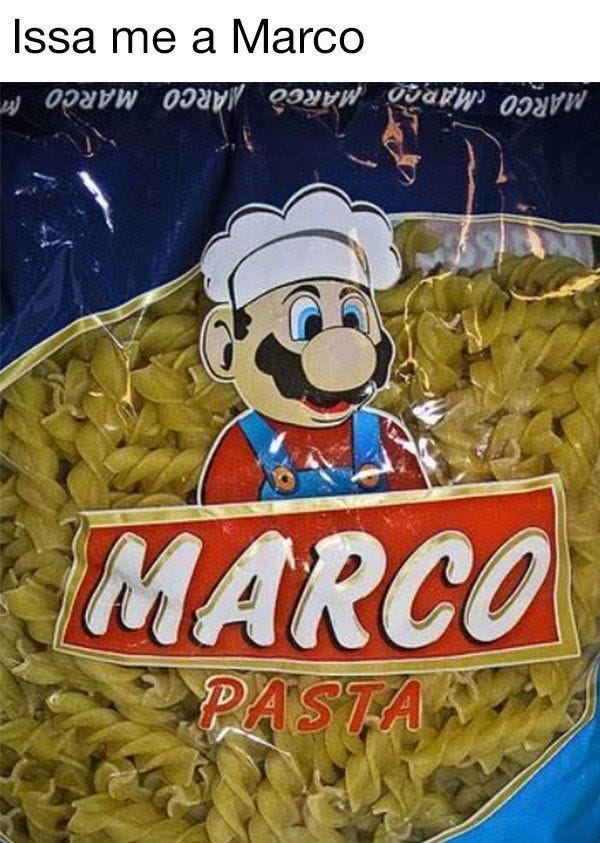The gaming industry is at an intriguing crossroads. While leveraging established intellectual properties (IPs) often feels like a necessary step to break into the market, recent successes like Helldivers 2 and Palworld demonstrate that capturing the essence of a beloved IP can be just as effective—and perhaps even more liberating (and certainly nice to not have to pay those licensing fees). By distilling what makes a popular franchise resonate and shedding its limitations, studios can create fresh, “original” experiences that avoid the pitfalls of being labelled as derivative.
It’s a fine line though.
Let’s dive into the delicate art of crafting a game that feels "inspired by" rather than a "knock-off," and why this distinction matters.
Why Established IPs Dominate
The Advantages of Pre-Built Recognition
Established IPs bring several undeniable advantages:
Pre-Built Audience: A known IP comes with a loyal fanbase, making it easier to generate interest and drive sales. This is the most obvious advantage. For example, you make a Star Wars game and millions of Star Wars fans will
analyse it to death complaining about all the smallest details and inconsistenciesprobably play it.Instant Recognition: Players immediately know what to expect, whether it’s the tone, gameplay style, or world-building.
Trust Factor: A strong IP often reassures players of a certain level of quality, especially when attached to a beloved franchise.
The Drawbacks of IP Dependence
However, relying on established IPs comes with constraints:
Creative Limitations: Developers must adhere to the established canon, which can stifle creativity. Not only this, but sometimes the IP-holder or licensor can be quite difficult to work with, hampering creative output. You might also have to go through various levels of approval for every decision which can limit your ability to execute effectively.
Fan Expectations: Hardcore fans can be resistant to changes or deviations from their cherished source material. This can vary from one IP to the next, some fan groups seem to love the idea of “playing with the source material” while others view the original content as “sacred texts” and any alterations are blasphemous,
Cost: Licensing a popular IP can eat into budgets, reducing resources for development or marketing. Generally speaking the bigger the IP, the bigger the cost.
The Appeal of “Essence-Distilled Originals”
Games like Helldivers 2 and Palworld represent a growing trend: capturing the core appeal of a popular IP while crafting a unique identity. These games evoke familiar feelings without being bound by the restrictions of an established franchise.
Why It Works
Freedom to Innovate: Without canon constraints, developers can experiment with mechanics, settings, or narratives that would clash with established lore.
Fresh Takes: By distilling the essence of an IP, studios can create games that feel familiar yet distinct.
Brand Building: Success with an original game strengthens the studio’s identity rather than reinforcing an external IP.
Examples
Helldivers 2 channels the cooperative military chaos of Starship Troopers without directly copying its characters or plotlines. It can still embody the same satirical look at military propaganda and the military-industrial complex, but push it into a more farcical space if it wants to. In other words, it doesn’t have to take itself so seriously. It can also add elements like new species of Terminids, Automatons and Illuminate and not be bound to just fighting the same Arachnids like in Starship Troopers. Now Sony has a franchise that is booming and has already announced a Helldivers movie in production.
Palworld blends Pokémon-style creature collection with survival mechanics and firearms, offering a playful yet distinct twist. It can have the cute and imaginative appeal of the creatures you would expect in Pokemon, but then get more violent with the use of rifles and explosives. (because a lightning-powered rodent isn’t interesting enough - give him a rocket launcher).
It’s worth noting that Palworld maybe flew too close to the Sun and incurred the vengeful wrath of Mario with Nintendo’s lawyers stepping in ensure their IP was not encroached upon. While no such thing happened with Helldivers because… well, the only entity that would sue Helldivers for encroaching on Starship Troopers IP would be Sony (the same company that owns Helldivers).
So it’s that easy, right? Just steal be inspired by something super popular and then take all the best stuff, change stuff you don’t like, add some more stuff and there you go - instant hit, right? Well, there’s that fine line we spoke about before. The line between “inspired by” and “knock-off”, “evolution” and “derivative” and ultimately “success” and “failure”
Avoiding the “Knock-Off” Label: Key Considerations
When creating a game inspired by an existing IP, the goal is to pay homage while crafting something unique. Here are the critical factors:
1. Capture the Essence, Not the Details
Focus on what makes the original work resonate with its audience—its core themes, tone, or mechanics—rather than duplicating surface-level elements. For example, Dark Souls is inspired by older dungeon crawlers but distinguishes itself with cryptic environmental storytelling and punishing combat.
2. Innovate on Core Features
Introduce unique gameplay mechanics or storytelling approaches:
Fortnite took the battle royale formula of PUBG and added base-building, carving out its own niche.
Stardew Valley modernized Harvest Moon’s farming mechanics with deeper relationships and a mod-friendly design.
3. Develop a Distinct Aesthetic
Visual and auditory design plays a massive role in setting a game apart. Borrow thematic motifs but ensure the overall art style and soundscape feel fresh and distinctive.
4. Create Original Lore
Develop a world, characters, and narrative that stand on their own, even if they’re inspired by familiar tropes. Combining cultural or genre influences can help craft something new.
5. Acknowledge the Inspiration
Being transparent about your influences can build goodwill. Developers of Slay the Spire openly credited deck-building games like Dominion while emphasizing their unique roguelike mechanics. This is a big one - I think there’s a hubris and ego to trying to claim any artistic product as wholly original, but simply given the sheer volume, history and diversity of content and inspirations from a multitude of genres and industries, it’s far more honest and relatable to declare your inspirations. In many ways, doing so can almost work like a call to action for anyone interested in the original inspiration material. You make a game inspired by the Jurassic Park movies and Jurassic Park fans will likely be interested (especially Jurassic Park’s lawyers).
6. Expand the Vision
Identify gaps or untapped potential in the original work and build on them. For instance, if an IP focuses heavily on combat, explore deeper narrative or exploration elements.
7. Avoid Direct Replication
Stay clear of copying names, designs, or plotlines too closely. This not only risks legal trouble but also makes the game feel lazy and uninspired.
8. Foster a Unique Community
Encourage your fanbase to develop their own traditions, memes, and identity. A thriving community can set your game apart and amplify its unique aspects. From a gameplay perspective, if you can make the game itself as open to the making (and sharing) of memes as possible, you are several steps ahead of your competition.
9. Position Your Game Effectively
Market your game as an evolution or reinterpretation of familiar themes, not as a replacement. Highlight what makes your game stand out in your promotional materials.
10. Test and Iterate
Engage with playtesters to ensure your game feels fresh and avoids being too derivative. Use their feedback to refine the unique aspects of your design.
With the example of Helldivers we see many inspired similarities to Starship Troopers: a similar intergalactic setting and time-period, a similar alien threat, satirical humour, hordes of enemies, overpowered weapons, and expendable human forces. These are then adapted with extra features to make it unique with elements such as the strategems, farcical commentary on the expendability of troops and other enemy races.
Finding the Balance
The distinction between “inspired by” and “knock-off” lies in the delicate balance between homage and originality. By offering something fresh while respecting the core appeal of your inspiration, you can avoid the pitfalls of derivative design and create a game that feels both familiar and exciting.
Success in this space requires bold creativity, a deep understanding of what makes great games tick, and a willingness to take risks. Whether leveraging a beloved IP or distilling its essence into something new, the goal is always to craft experiences that resonate with players and stand the test of time.











